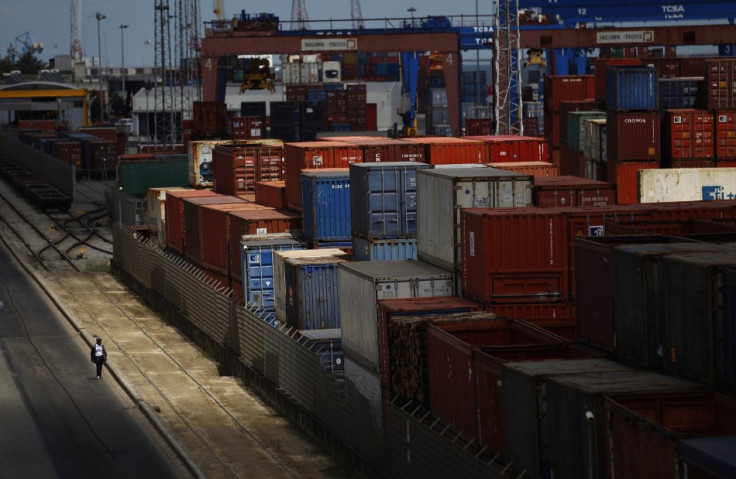Eurozone Economic Slump Continues Amid Surprise German Slowdown [VIDEO]

Economic activity around the eurozone showed marginal improvement in April even as headwinds from the Cyprus bailout hit growth in the core of Europe and suggest a recession that will deepen into the second quarter of this year.
A composite reading of manufacturing and services activity around the eurozone was unchanged from March at 46.5, according to Markit Economics' monthly purchasing manager's index, published on its website. Manufacturing activity slipped marginally to 46.5 from a March reading of 46.8. That was offset by a slight improvement in the service sector reading, which rose to 46.6 from 46.4 in March. All three readings were largely in-line with a poll of forecasts conducted by Reuters.
The first estimate of April activity in Germany, however, the region's biggest and most important economy, fell to 48.8, Markit said, from a final March reading of 50.6. It's the first sub-50 grade for Germany since November of last year.
"Previously, we've seen Germany expand while other countries have contracted - notably Spain, Italy and France," said Markit's chief economist Chris Williamson. "Now it seems those contractions are being accompanied by a downturn in the largest economy, Germany, and that will no doubt act as a drag on growth."
In France the composite reading notched a surprise improvement, rising to a four-month high of 44.2 but still well shy of the 50 mark which generally separates growth from contraction, according to economists.
The euro fell to a session low of $1.30245 following the release of the German data at 0830 BST while German bund futures, a proxy for market risk, rose 4 ticks on the session to trade at 146.39 - the highest since June of last year - as investors bet the poor figures could spur a renewed call for an interest rate cut from the European Central Bank when it meets next week in the Slovak Republic capital of Bratislava.
"One could argue that it would be difficult for the ECB not to cut rates in one of the next two meetings after the strong language used at the April press conference. By June at the latest, the ECB Governing Council needs to decide whether the (second half) recovery is really being called into question by recent events, political uncertainty and reform fatigue," wrote Morgan Stanley economist Elga Barsch in a note published late last week. "In the run-up to the next few ECB meetings, we think that the incoming data will still be important in determining the timing and size of the rate cut. However, a cut in the deposit rate would seem unlikely to us after ECB President (Mario) Draghi spoke of the unintended consequences of a negative deposit rate at the March meeting. Hence, our base case would be for a 25bp cut in the refi rate and a 50bp reduction in the marginal lending rate to keep the corridor around the refi rate symmetric."
In its most recent World Economic Outlook report, published last week, the International Monetary Fund said it expects an even deeper recession of 0.3 percent this year than it had previously forecast in the Autum of 2012. Germany, the IMF said, is likely the only major of the seventeen members using the single currency to achieve growth this year - albiet at a modest 0.6 percent pace.
Government debt as a percentage of the eurozone economy rose 3.3 percentage points to 90.6 percent at the end of last year, Eurostat said, the highest levels on record. At the same time the collective budget deficit of the 17 countries that use the single currency fell to 3.7 percent of Eurozone GDP from 4.2 percent the previous year, Eurostat said. Around the 27-memeber European Union, which includes Great Britain, the figures fall to 85.3 percent and 4 percent respectively.
Spain recorded the largest Eurozone budget deficit of 10.6 percent of GDP, Eurostat said, wider than the 9.4 percent recorded in 2011 while Italy had the second lowest - behind Germany's 0.2 percent - at 3 percent of GDP. Italy's overall debt load, however, did rise to 127 percent of GDP, according to Eurostat, the second largest in the single currency area behind Greece's 156.9 percent.
© Copyright IBTimes 2025. All rights reserved.





















